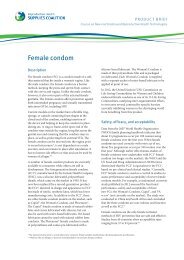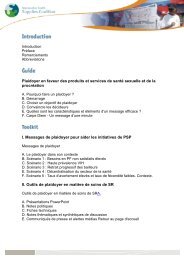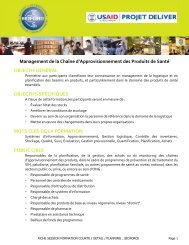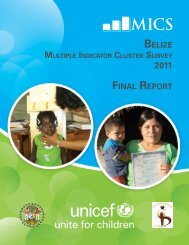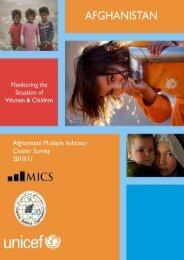EVERY WOMEN EVERY CHILD UN COMMISSION ON LIFE-âSAVING
EVERY WOMEN EVERY CHILD UN COMMISSION ON LIFE-âSAVING
EVERY WOMEN EVERY CHILD UN COMMISSION ON LIFE-âSAVING
- No tags were found...
You also want an ePaper? Increase the reach of your titles
YUMPU automatically turns print PDFs into web optimized ePapers that Google loves.
sepsis, pre-‐eclampsia and eclampsia. There is poor coverage of Family Planning services especially in the hard-‐to-‐reach areas with unmet need for Family Planning stands at 41%, moslty as a result of inadequate access of young people to contraceptives and inadequate use of long acting and permanent methods. Another major problem concerns newborn deaths, which have maintained the high-‐sustained levels of the IMR, making it impossible for Uganda to achieve the MDG 4 target of reducing by two-‐thirds the mortality rate among children under-five by 2015. According to the Uganda newborn situation analysis of 2008, 39% and 25% of deaths among infants and children under-‐five, respectively, are under 28 days of life. The majority of these deaths result from preventable causes like infections, birth asphyxia or injuries and complications of prematurity. A related problem is early, unplanned and unwanted pregnancy with evidence of high incidence of unsafe abortions and its related complications in the age group. The Uganda road map for acceleration of reduction of Maternal and Neonatal Morbidity and Mortality, the Reproductive Health Commodity Security Strategy and the National Child Survival Strategy were formulated in 2007, 2008 and 2009, respectively. With regard to newborn health, a detailed framework on newborn health was developed to operationalize the newborn health component of the Child Survival Strategy. In an attempt to bring services closer to the people the community treatment of malaria, pneumonia and diarrhea policy, through use of village health teams was adopted in 2010. The effective implementation of these strategies is expected to contribute significantly towards achievement of MDGs 4 and 5 by 2015. The Uganda National Drug Policy is operationalized through the Pharmaceutical Sector Strategic Plan, and aims at ensuring the availability and accessibility of adequate quantities of affordable, efficacious, safe and good quality essential medicines to all. The public sector national medicines procurement is mainly through National Medical Stores (NMS), a parastatal organization, while the Joint Medical Stores (JMS) is the major PNFP sector supplier for medicines and health supplies. The National Drug Authority (NDA) is responsible for regulating the pharmaceutical market, licensing premises, drug information, pharmaco-‐vigilance, quality assurance, import permissions and disposal of expired medicines but has a limited capacity with insufficient outreach. Global initiatives provide the bulk of reproductive health commodities. Government of Uganda distributes life saving commodities free of charge through the public health system. The public health system includes National referral Hospitals, Regional Referral Hospitals, General Hospitals, Health Centres IV, III, and II and community based distributors. 1.2 Problem Statement Major health system challenges still remain to ensure equitable and sustained access to quality



